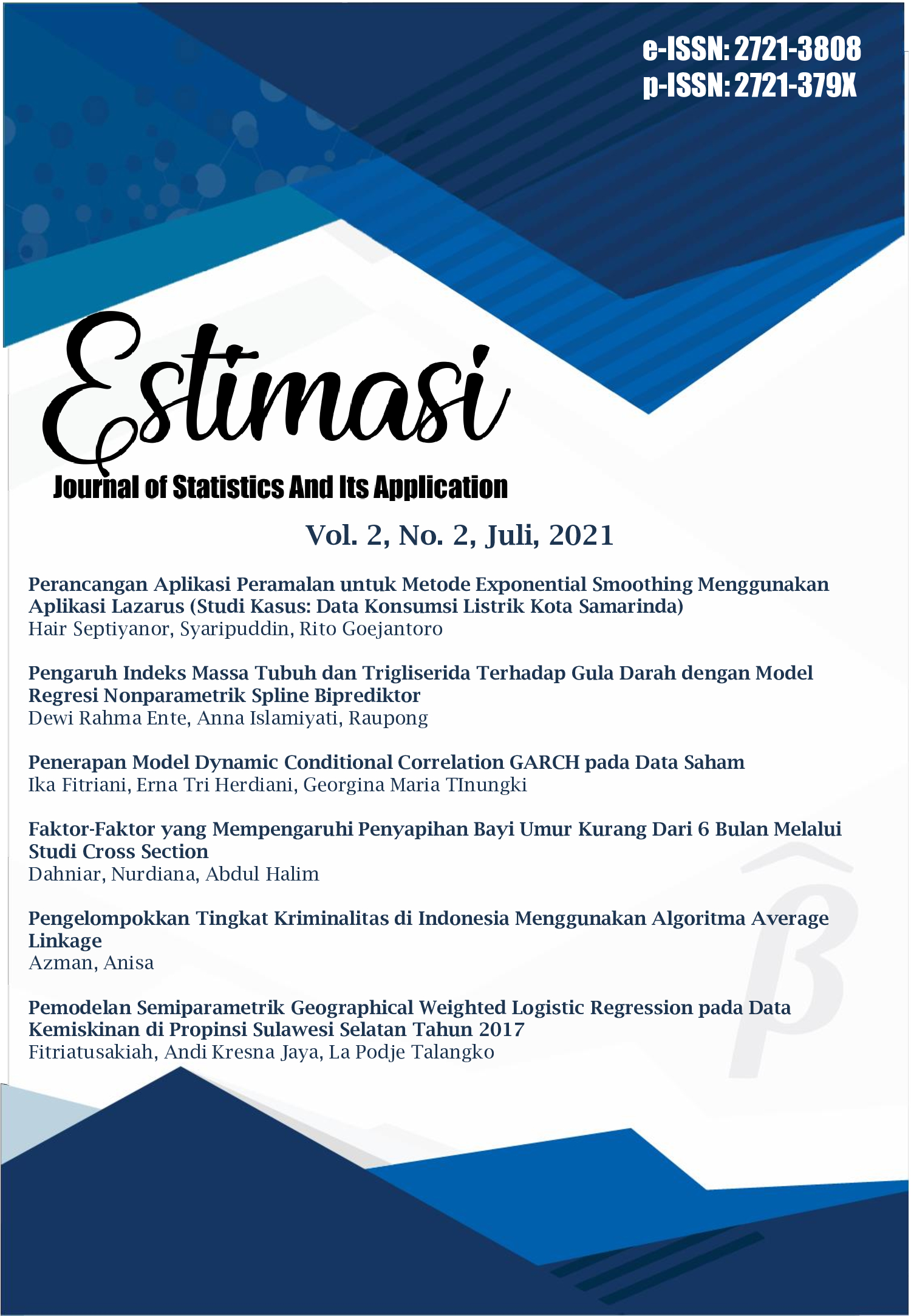Pengelompokkan Tingkat Kriminalitas di Indonesia Menggunakan Algoritma Average Linkage
Keywords:
Crime, Average Linkage Algorithm, ClassifyAbstract
Crime needs to be analyzed and grouped so that the act does not cause harm either ecologically or psychologically. The statistical method that can be used to classify crime is the Average Linkage Algorithm. The study aims to group and analyze the characteristics of criminal cases in Indonesia. From the results of the analysis, 3 clusters were formed based on the average of each cluster. Cluster 1 consists of Aceh, West Sumatra, Riau, Jambi, South Sumatra, Bengkulu, Lampung, Kep. Bangka Belitung, Kep. Riau, West Java, Central Java, DI Yogyakarta, East Java, Banten, Bali, West Nusa Tenggara, East Nusa Tenggara, West Kalimantan, Central Kalimantan, South Kalimantan, East Kalimantan, North Sulawesi, Central Sulawesi, South Sulawesi, Southeast Sulawesi, Gorontalo, Maluku, North Maluku and Papua. Cluster 2 consists of North Sumatra while Cluster 3 consists of Metro Jaya. The grouping results are the basis of the government, apparatus, and the community in implementing the handling of criminal acts that occur in each cluster area so that prevention can minimize the losses caused by these crimes.
References
K. Kartono. Patologi Sosial, Jakarta: Raja grafindo Persada, 1999.
Gudono. Analisis Data Multivariat Edisi Pertama, Yogyakarta: BFE, 2011.
N. W. A. Aprilia, I. G. A. M. Srinadi dan K. Sari. Pengelompokkan Desa/Kelurahan Di Kota Denpasar Menurut Indiaktor Pendidikan, E-Jurnal Matematika, Vol. 5, No. 2, pp. 38-43, 2016.
S. Santoso. Buku Latihan SPSS Statistik Multivariat, Jakarta: PT Elex Komputindo, 2002.
R. A. Johnson and D. W. Wichern. Applied Multivariate Statistical Analysis. 6th Edition, United States of America: Prentice-Hall International.Inc, 2007.
S. Fitriani. Pemodelan Modified Jackknife Ridge Regression pada Data yang Mengandung Multikolinearitas. Skripsi, Makassar: Universitas Hasanuddin, 2019.
C. E. Mongi. Two-Step Clustering Analysis for Combination Data. JdC, Vol. 4, No. 1, pp. 9-19, 2015.
Downloads
Published
Versions
Issue
Section
License
Copyright
It is the author's responsibility to ensure that his or her submitted work does not infringe any existing copyright. Authors should obtain permission to reproduce or adapt copyrighted material and provide evidence of approval upon submitting the final version of a manuscript.


